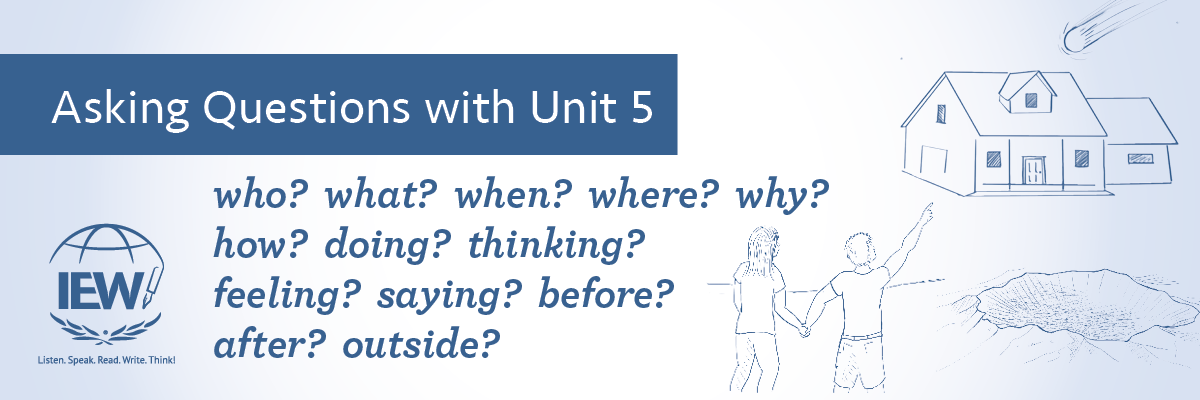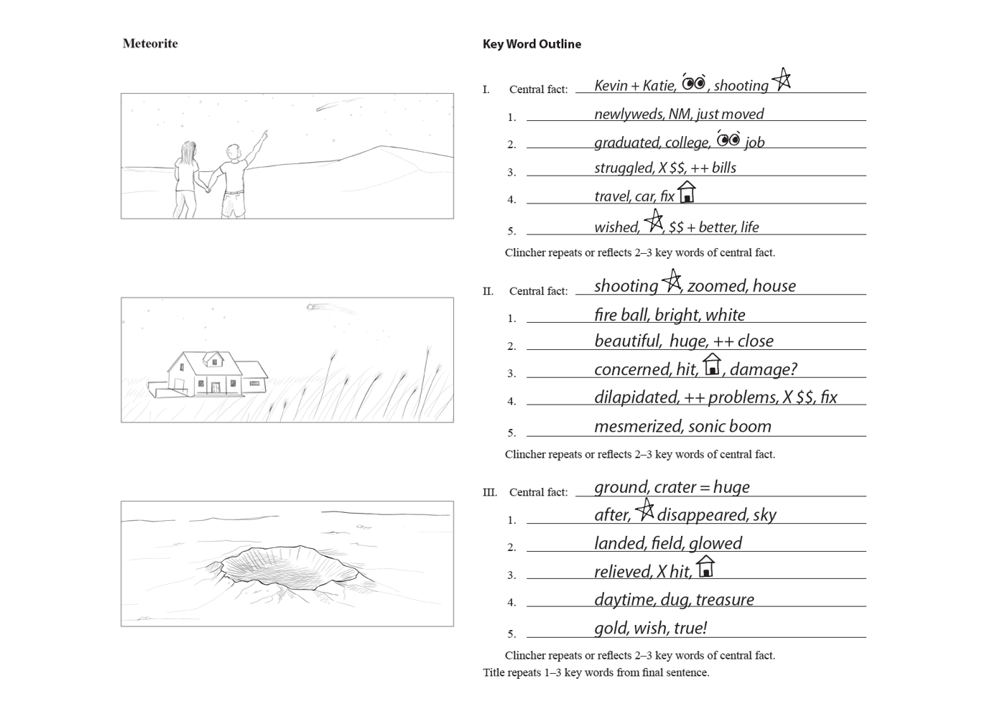
IEW teaches students to write with structure and with style. Style includes vocabulary. Structure is the elements found in compositions. Throughout the year students progress through nine structural units.
At this point in the blog series, we have covered Unit 1 through Unit 4. It is time to advance to Unit 5: Writing from Pictures.
In Unit 5 instead of using source texts, students write three paragraphs from a series of three pictures. The first step has not changed. Students write a key word outline (KWO). Key words for the outline are formed by asking questions. The first question is “What do you see in the picture?” Students look at the picture and determine the central fact by listing things they see in the picture.
The other lines of the KWO explain what is happening and how it came to be that way. Students ask the big six questions to find answers: who, what, when, where, why, and how. Students may also ask what are they doing, thinking, feeling, or saying? What happened before or after the picture? What might be happening outside of the picture? answers become the details for the outline.
Unit 5 is about event description, and the students’ task is to describe an event. It’s as if you pulled a picture book from the bookshelf and randomly opened to a page. You look at the students and say, “Tell me what this picture is about.” You turn a few pages and ask, “What about this picture? What is it about?” You flip a few more pages and say, “Now, tell me about this one.” The students describe each picture and then explain the details surrounding it.
This should be a fun activity. Students do not have to answer every question, nor do they need to ask the questions in the order they are written. If they do not know an answer, allow them to make up information. The answers can be brief. After all, students may add details when they write their paragraphs.
This sample set of three pictures and the KWO are from Wonders of Science Writing Lessons. The first picture shows a boy and girl watching a shooting star. Students might ask, What are their names? Where are they at? The second picture shows a shooting star in the sky above a house. Questions students may ponder include the following: How close is it? Will it hit the ground? Will it destroy anything? If it lands on the ground, will anyone find it? The third picture shows a crater in the ground. Questions to consider include How was it formed? How large is the crater? Is anything in the crater?

Students use the KWO to write their 3-paragraph compositions. Each paragraph begins with a central fact, contains details, and ends with a clincher sentence.
Central Fact
The central fact tells what you see in the picture. It is the topic sentence of the paragraph. Think of this sentence as the caption that describes the picture.
Details
The sentences found within the paragraph explain the details surrounding the picture. Students developed these details by asking questions and making up answers to describe the event related to the picture. Encourage students to add details and descriptive language so that their sentences show strong image and feeling.
Clincher Sentence
The clincher sentence reminds the reader what you see in the picture. Because it is the clincher sentence, it must repeat or reflect two or three key words placed on the central fact line. If students advanced beyond the picture in the body of the paragraph, they must come back to the picture to remind the reader of the central fact. As they did in Unit 4, students follow the topic-clincher rule.

Encourage students to write the Unit 5 model from memory. Knowing questions to ask about an event will benefit students as they conduct research for future papers. Mastering how to return to the central fact of the picture to write a clincher sentence will train students to write logical, well-organized essays later on. Challenge older, more seasoned students to write variations by changing the author’s perspective (i.e., news reporter, spy, alien, child, historical record).
by Heidi Thomas
Originally posted on February 1, 2024
